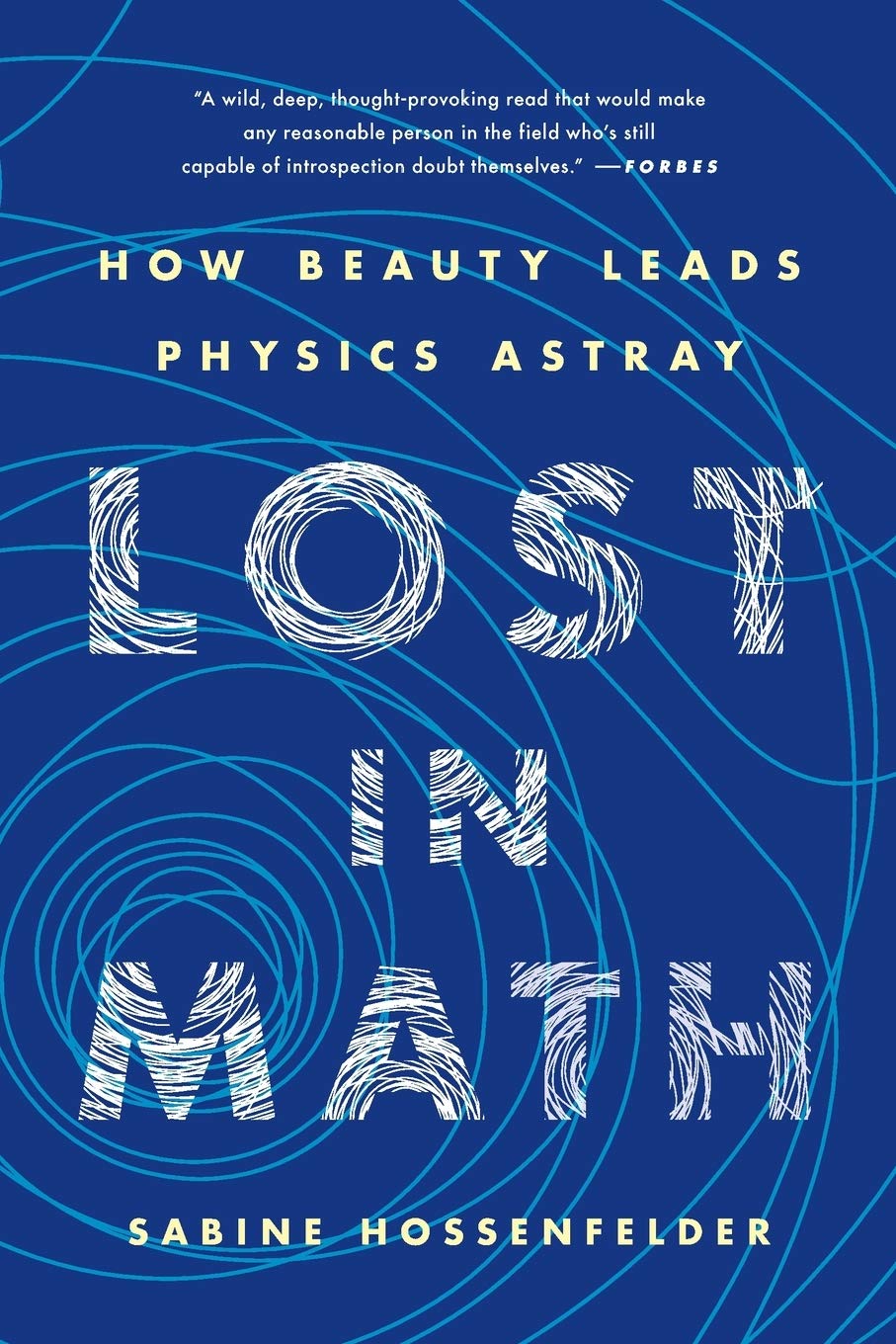Lost in Math - How Beauty Leads Physics Astray - Sabine Hossenfelder

## Metadata
- Author: **Sabine Hossenfelder**
- Full Title: Lost in Math - How Beauty Leads Physics Astray
- Category: #books
- Tags: #epistemology #mathematic #physic
## Highlights
- “Most of the time it’s a gut feeling,” he says, “nothing that you can measure in mathematical terms: it is what one calls physical intuition. There is an important difference between how physicists and mathematicians see beauty. It’s the right combination between explaining empirical facts and using fundamental principles that makes a physical theory successful and beautiful.” (Location 126)
- the Large Hadron Collider (LHC), humankind’s closest look yet at the elementary building blocks of matter: a $6 billion, 16-mile underground ring to accelerate protons and smash them together at almost the speed of light. (Location 129)
- The LHC is a compilation of extremes: supercooled magnets, ultrahigh vacuum, computer clusters that, during the experiments, record about three gigabytes of data—comparable to several thousand ebooks—per second. (Location 131)
- “The sense of beauty of a physical theory must be something hardwired in our brain and not a social construct. It is something that touches some internal chord,” he says. “When you stumble on a beautiful theory you have the same emotional reaction that you feel in front of a piece of art.” (Location 144)
- The problem wasn’t that he had the wrong theory; the problem was that he didn’t know how to find Newton’s gravitational potential in his own theory. (Location 212)
- Having the right math is only part of having the right theory. (Location 215)
- In our search for new ideas, beauty plays many roles. It’s a guide, a reward, a motivation. It is also a systematic bias. (Location 237)
- Fermions are extreme individuals. No matter how hard you try, you will not get two of them to do the same thing in the same place—there must always be a difference between them. Bosons, on the other hand, have no such constraint and are happy to join each other in a common dance. This is why electrons, which are fermions, sit on separate shells around atomic nuclei. If they were bosons, they would instead sit together on the same shell, leaving the universe without chemistry—and without chemists, as our own existence rests on the little fermions’ refusal to share space. (Location 253)
- Physicists use a lot of math and are really proud that it works so well. • But physics isn’t math, and theory development needs data for guidance. • In some areas of physics there hasn’t been new data for decades. • In the absence of guidance from experiments, theorists use aesthetic criteria. • They get confused if that doesn’t work. (Location 331)
- With the help of tables that detailed the planets’ exact positions, Kepler later convinced himself that his model was wrong, and concluded that the planets move in ellipses, not circles, around the Sun. His new idea was promptly met with disapproval; he had failed to meet the aesthetic standard of the time. (Location 361)
- Hermann Weyl (1885–1955), a mathematician who made important contributions to physics, was rather unapologetic about his not-so scientific methods: “My work always tries to unite the true with the beautiful; but when I had to choose one or the other, I usually chose the beautiful.” (Location 393)
- “Beauty is a dangerous concept, because it can always mislead people. If you have a theory that is more beautiful than you expected at first, that’s an indication that you might be correct, that you might be right. But it’s not a guarantee at all. In your eyes a theory might be beautiful, but it might just be wrong. There’s nothing you can do about it.” (Location 502)
- Erwin Schrödinger commented: “I knew of [Heisenberg’s] theory, of course, but I felt discouraged, not to say repelled, by the methods of transcendental algebra, which appeared difficult to me, and by the lack of visualizability.”27 Not that Heisenberg was any nicer about Schrödinger’s ideas. In a letter to Wolfgang Pauli he wrote: “The more I think about the physical portion of the Schrödinger theory, the more repulsive I find it. What Schrödinger writes about visualizability of his theory… I think it’s crap.” (Location 525)
- quantum fluctuations make a huge contribution to the Higgs’s mass. (Location 658)
- Supersymmetry much improves the situation because it prevents the overly large contributions from quantum fluctuations to the Higgs mass. It does so by enforcing the required delicate cancellation of large contributions, (Location 674)
- This means we know now that if the superpartners exist, their masses must be fine-tuned. Naturalness, it seems, is just not correct. (Location 689)
- Karl Popper’s idea that scientific theories must be falsifiable has long been an outdated philosophy. I am glad to hear this, as it’s a philosophy that nobody in science ever could have used, other than as a rhetorical device. It is rarely possible to actually falsify an idea, since ideas can always be modified or extended to match incoming evidence. Rather than falsifying theories, therefore, we “implausify” them: a continuously adapted theory becomes increasingly difficult and arcane—not to say ugly—and eventually practitioners lose interest. (Location 704)
- Particle physicists also think a theory is beautiful if it contains only “natural” numbers—numbers that are close to 1. An unnatural number is called “fine-tuned.” • If we are starved of data and need a theory to decide where to look for new data, mistakes in theory development can lead to a dead end. • Some philosophers are proposing to weaken the scientific method so that scientists can select theories by criteria other than a theory’s ability to describe observation. • The questions of how to move on despite lack of data and whether to amend the scientific method are relevant beyond the foundations of physics. (Location 717)